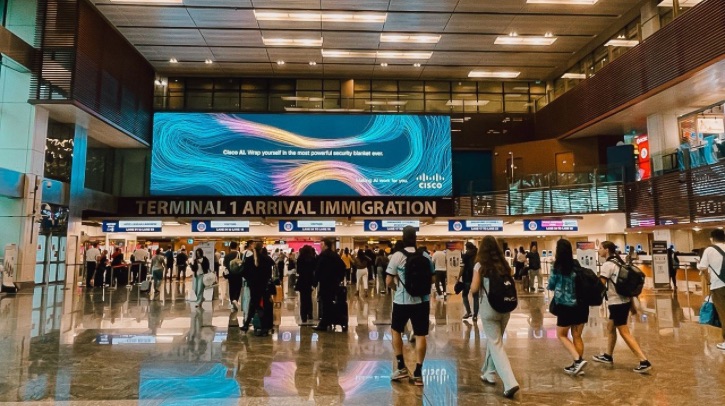Changi Airport Group (CAG) will invest S$3bn (US$2.25bn) over the next six years in Singapore Changi Airport Terminals 1 to 4 to improve services such as baggage handling, check-in, immigration and Skytrain connections between terminals, as well as to replace end-of-life systems to facilitate smoother passenger and airline experience.
S$3bn investment plan
The investments include the rejuvenation of Skytrain subsystems, upgrades to Terminal 3 baggage handling system and the new Terminal 1 to 3 inter-terminal baggage conveyance system. Changi Airport will replace various Skytrain subsystems, including signaling and communications, which started operations in 2008 and are nearing end-of-life. New cars will also be added to provide more capacity. The rejuvenation will help improve operational performance before the entire system is overhauled in the late 2030s.
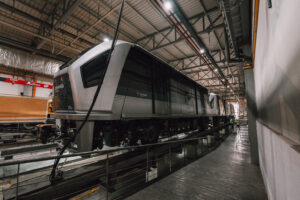
By upgrading the Terminal 3 Baggage Handling System and the new Terminal 1 to 3 Inter-Terminal Baggage Conveyance System, Changi Airport plans to enhance capacity, energy efficiency and resilience. The upgrade includes a revamp of its early bag storage subsystem, which will boost capacity by 65%.
Additionally, a new rooftop Inter-terminal baggage conveyance system connecting Terminal 1 to Terminal 3 will be constructed, creating a second pathway for passenger baggage to be transferred between the two terminals. This will ease the demand on the current underground system and reduce the manpower needed for baggage towing.

Alongside this, a new check-in row is being constructed in Terminal 4’s departure level. It will integrate Fast and Seamless Travel facilities comprising self-service check-in kiosks and automated bag drops. The new facilities will increase the terminal’s check-in capacity by about 15% and enable it to accommodate up to 2,500 passengers per hour.
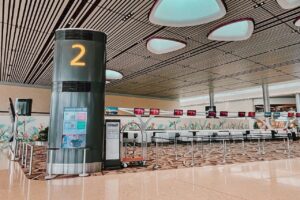
The capacity of Terminal 1’s East and West Arrival Immigration Halls will be expanded by almost 60%. The larger space will relieve the key bottlenecks for arrival clearance, especially during peak periods. Along with the Immigration & Checkpoints Authority’s New Clearance Concept, passengers can expect an even better arrival experience at Terminal 1 in the future.
The investments will also strengthen airside infrastructure to better accommodate new, larger aircraft. According to the airport, airlines around the world are set to introduce Boeing’s new B777X family of airplanes into their fleets when the aircraft is ready for operations by 2026. As the world’s longest twin-engine aircraft, the B777X has a wheel load that places a heavy demand on aircraft pavements. While most of Changi Airport’s existing infrastructure can handle the operational demands of the B777X, some taxiways will need to be reinforced and contact stands upgraded. In total, Changi Airport will have 39 contact stands across its terminals that can receive this aircraft.
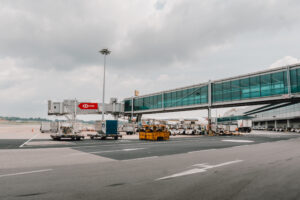
CAG also plans to construct more remote aircraft parking stands that can be used for passenger and cargo aircraft. This will bring the total number of aircraft stands to more than 200. A taxiway will be extended to connect these facilities to the rest of the airport. These works will meet the rising demand for aircraft parking at Changi Airport. New smart systems will be introduced to minimize delays in aircraft turnaround, enabling airlines to optimize their operations with greater precision.
Furthermore, CAG is planning to rejuvenate the systems and terminal facilities at Terminal 3, which opened in 2008 and will be more than 20 years old by 2030. It will be an opportunity to elevate the passenger experience and expand Changi’s retail offerings.
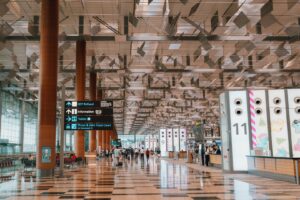
To enhance the safety and well-being of airport workers, CAG will invest in more staff facilities too. This will include refresh pods to mitigate heat stress, enhancements to lightning shelters to protect staff during inclement weather, and improved staff lounges and rest areas.
Initiatives have also been introduced to improve employee productivity and create opportunities for upskilling among ground staff so they can take on higher-value roles. These projects include trials to use artificial intelligence for security screening, and to increase automation for airport ground handling operations, such as greater adoption of autonomous vehicles on the apron.
Increase in airport charges and aviation levy
Airport charges will be increased progressively between 2025 and 2030 to fund the new investments, and cover higher operating costs, including for manpower and energy. In particular, wages for airport workers have increased over the past few years and are expected to continue growing in line with national initiatives such as the Progressive Wage Model. The charges also take into consideration earlier investments made during the Covid-19 pandemic, when charges were held constant from April 1, 2020, to 1 November 2022, and planned increases were suspended to tide airlines over during the crisis. The key revisions are as follows:
Passenger Service and Security Fee (PSSF) for OD passengers, currently S$46.40 (US$34.97), will remain unchanged for two years until March 31, 2027. This will then increase by S$3 (US$2) annually for four years from April 1, 2027. The fee increase per departing flight from April 1, 2027, is about 1% of an economy-class ticket to Bangkok, and less than 0.5% of an economy-class ticket to Tokyo or London, assuming today’s ticket prices.
PSSF for transfer/transit (TT) passengers, currently S$6 (US5), has remained unchanged since 2015, even though fees and charges were last reviewed in 2018. It will increase by S$3 (US$2) annually for three years from April 1, 2025, and S$1 (US$0.75) annually for the next three years. The fee increase per transfer from 2025 is less than 1% of an economy-class ticket from London to Sydney, with a connection at Changi Airport. The price adjustments for TT passengers will apply to air tickets issued from January 1, 2025, for travel from April 1, 2025.
LPA charges for airlines operating at Changi Airport will be adjusted annually from April 1, 2025. The LPA charge for a narrow-body A320 aircraft, presently around S$1,200 (US$900) per landing, will increase annually by an average of S$110 (US$80) per landing for the first three years, and an average of about S$65 (US$50) per landing for the next three years. The LPA charge for a wide-body A350 aircraft, currently around S$3,600 (US$2,700), will increase annually by an average of S$290 (US$220) per landing for the first three years, and an average of about S$190 (US$140) per landing for the next three years.
CAG and the Civil Aviation Authority of Singapore (CAAS) have engaged major airlines on the revisions to the airport charges. To help airlines with the transition, CAG will provide a 50% rebate on the increase in LPA charges for six months, from April 1, 2025, to September 30, 2025. More information will be shared with airlines subsequently.
CAAS will continue to work with the aviation ecosystem, including the airport operator, airlines, ground handlers and other companies, and aviation professionals, to grow the Singapore air hub, including through enabling policies, regulations and infrastructure; safety oversight; and new capabilities in sustainability, innovation, manpower development and cybersecurity. The Aviation Levy that finances CAAS’s operations, currently S$8 (US$10) for OD passengers, will remain unchanged until April 1, 2027, when it will see a one-time increase of S$2 (US$1.50), to S$10 (US$7.50).
CAAS and CAG will continue to grow Changi’s network from around 160 city links today to over 200 city links in the mid-2030s. More than 100 airlines operate from Changi today. CAAS and CAG will continue to work with airlines that are committed to the Singapore air hub to support their plans to grow their networks.
Staying competitive
Air travel demand is expected to grow strongly over the next few decades, particularly in the Asia-Pacific region. Both the International Air Transport Association (IATA) and Airports Council International have projected global passenger volumes to at least double between 2023 and 2043, with Asia-Pacific recording the fastest rise and contributing to more than half of this growth.
Over the past few years, including during the Covid-19 pandemic, CAG has invested heavily in airport infrastructure to position the Changi air hub for recovery and growth. This has included the significant expansion and upgrading of Changi Airport Terminal 2 spanning the departure, immigration and transit halls and its baggage handling system, increasing the terminal’s handling capacity by five million to 28 million passengers per annum; additional check-in facilities in Terminal 3; new aircraft parking stands; and the operationalization of the three-runway system.
For more of the top insights into Changi Airport’s passenger experience investments, read Passenger Terminal World’s exclusive feature, How does Changi Airport’s revamped T2 redefine the airport experience?, here.

